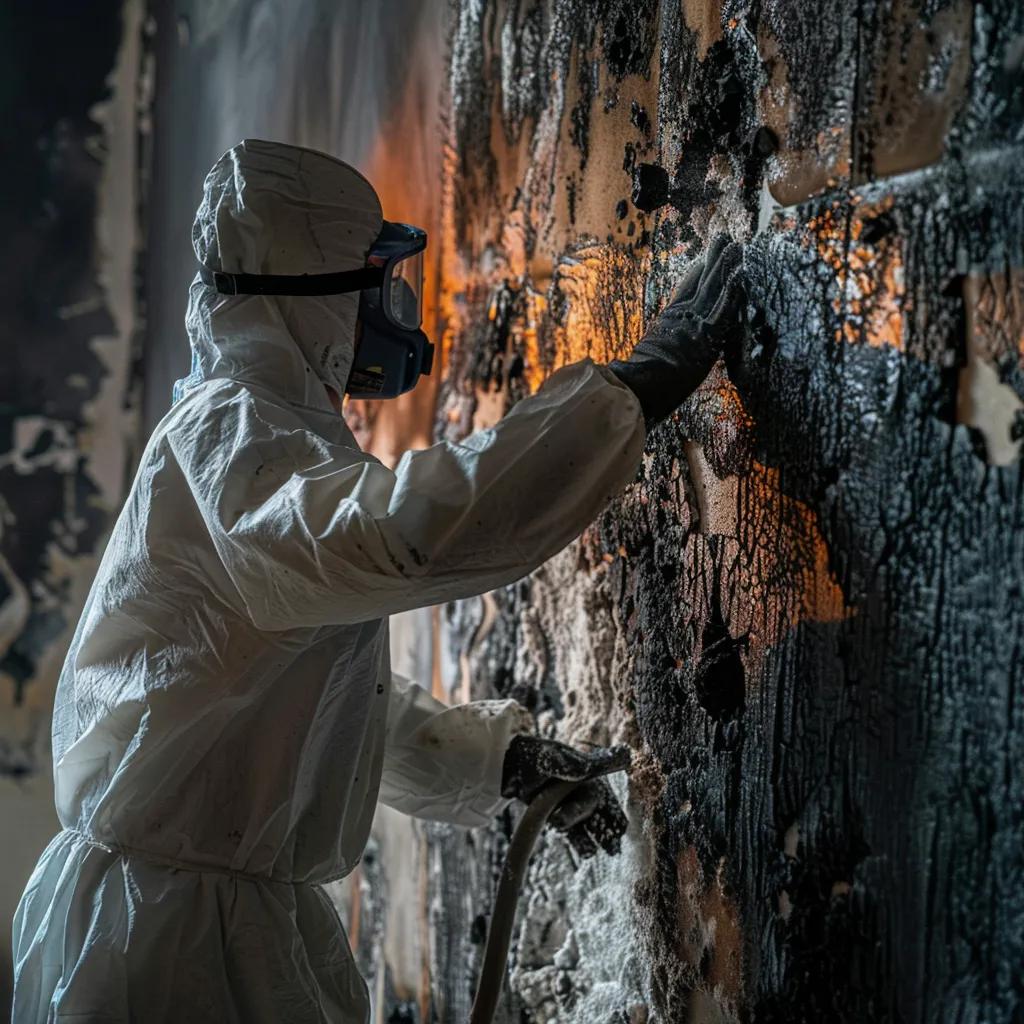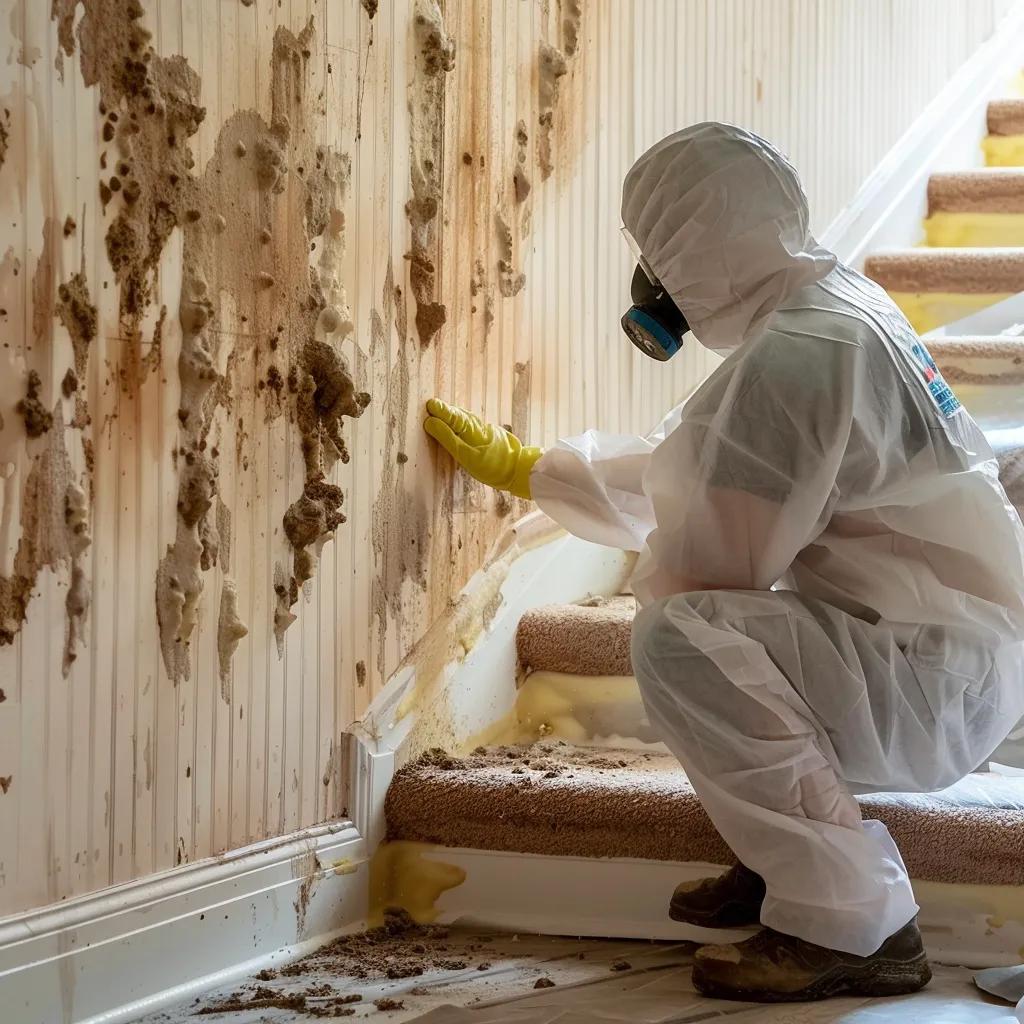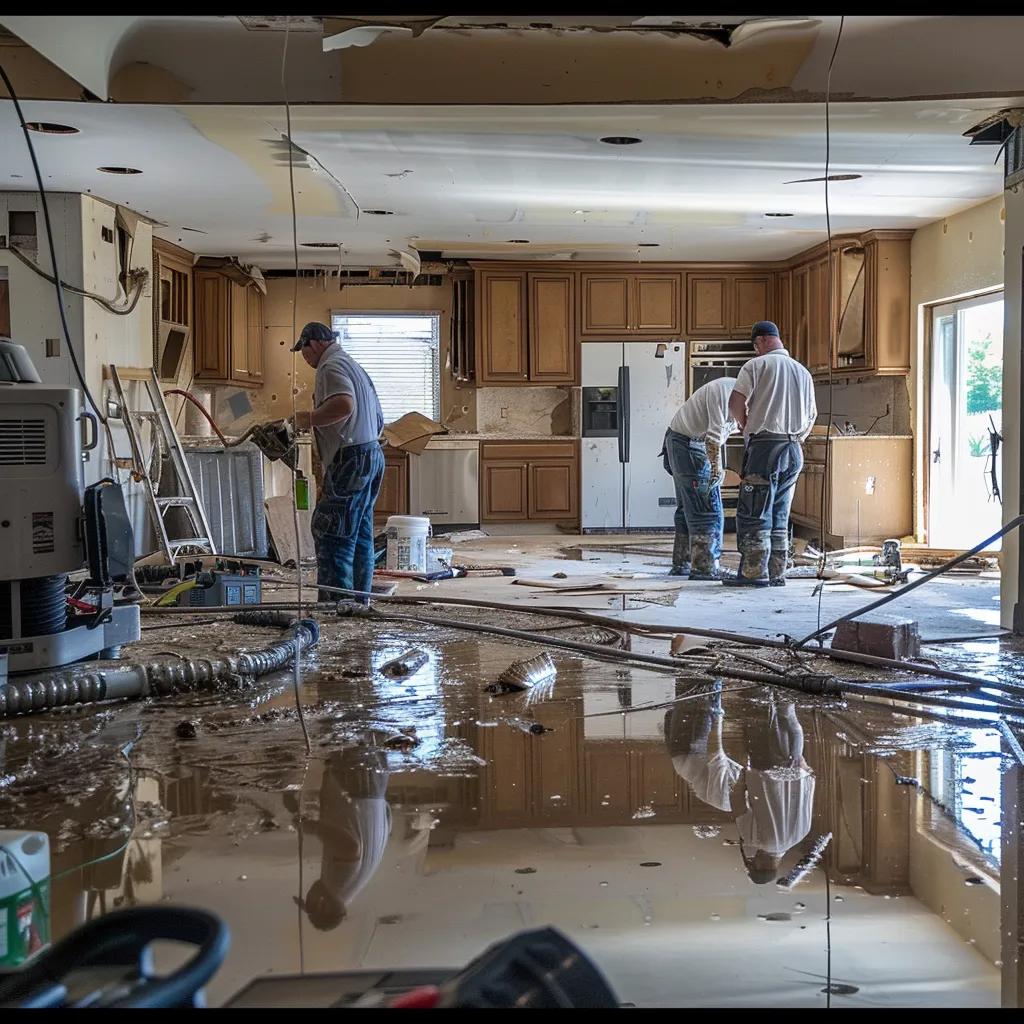What Does a Restoration Company Do? Comprehensive Disaster and Damage Restoration Services Explained
Property disasters can strike without warning—burst pipes, raging fires, toxic mold growth, and hurricane-force winds can reduce homes and businesses to unsafe conditions in hours. A restoration company specializes in comprehensive disaster recovery, from emergency mitigation through full reconstruction, to return your property to pre-loss condition efficiently and safely. In this guide, you’ll discover the four major damage types restoration firms encounter, the step-by-step process they follow, why professional intervention matters, how local experts serve Tampa Bay, when urgent disaster recovery is needed, common homeowner concerns, and how to initiate service quickly. By the end, you’ll understand exactly what a restoration company does and how to secure rapid, certified help when disaster strikes.
What Types of Property Damage Do Restoration Companies Handle?
Restoration specialists address every form of structural and environmental damage that threatens the safety and functionality of residential and commercial buildings. Their expertise spans water intrusion, fire and smoke contamination, mold colonization, and storm impact. Each category requires unique methods and equipment to eliminate hazards and restore integrity for long-term protection.
Each category demands targeted mitigation techniques before full repairs can begin, ensuring no hidden hazards remain and preparing the structure for reconstruction and sanitization.
What Is Water Damage and How Is It Restored?
Water damage occurs when excess moisture infiltrates building materials, leading to structural weakening and microbial growth. Restoration begins with an immediate response to extract standing water, followed by thorough structural drying using dehumidifiers and air movers. This process prevents secondary damage and mold proliferation, restoring walls, floors, and contents to safe, dry condition.
Key restoration steps include:
- Moisture Mapping – Locating hidden wet areas with infrared cameras
- Water Extraction – Removing pooled water using industrial pumps
- Drying & Dehumidification – Lowering humidity to below 45 %
- Anti-microbial Treatment – Applying biocides to inhibit mold
Once materials reach acceptable moisture levels, technicians repair affected drywall, flooring, and structural elements to complete the recovery.
Water Damage Restoration Process
Water damage restoration involves several crucial steps, including water extraction, structural drying, and anti-microbial treatments to prevent mold growth. These steps are essential to restore the property to a safe and habitable condition, preventing further damage and health risks.
This guide from FEMA provides detailed information on the steps involved in water damage restoration, which aligns with the article’s description of the process.
How Do Restoration Companies Address Fire and Smoke Damage?

Fire damage restoration combines hazardous material cleanup, soot removal, and odor control to make a structure safe again. Technicians inspect charred materials, remove debris, and deploy specialized cleaning agents and thermal foggers to neutralize smoke particulates. Content cleaning restores salvageable items, while reconstruction specialists repair or replace damaged building components to restore aesthetics and functionality.
Soot and smoke removal involves:
- HEPA vacuuming to capture fine particulates
- Soda blasting for nonporous surfaces
- Ozone or hydroxyl odor neutralization
Thorough cleaning ensures no lingering toxins or odors remain before rebuilding begins.
What Are the Common Causes and Solutions for Mold Damage?

Mold thrives on moist, organic surfaces and can pose serious health risks if left untreated. Common causes include prolonged humidity, untreated leaks, and condensation behind walls. Remediation protocols start with containment barriers and negative-pressure systems to prevent spore migration, followed by mechanical removal of mold-infested materials and HEPA vacuuming. Specialists then apply antifungal treatments and ensure complete structural drying to prevent recurrence.
Key containment and remediation actions:
- Seal work area with polyethylene sheeting
- Install negative-air machines with HEPA filters
- Remove porous materials (carpets, drywall) if heavily infested
- Treat remaining surfaces with antimicrobial solutions
This approach eradicates active colonies and halts future growth, protecting inhabitants and property alike.
How Is Storm Damage Managed by Restoration Experts?
Storm damage restoration begins with emergency board-up services to secure openings created by wind or debris, preventing further water intrusion or vandalism. Technicians clear fallen branches and roofing debris, then assess structural integrity. Repairs may include tarping roofs, replacing siding, and restoring interior finishes. Throughout, professionals document damage for insurance purposes and coordinate claims assistance to streamline the recovery process.
Storm recovery steps:
- Emergency tarping and board-up
- Debris removal and site cleanup
- Structural repairs to roofing and exterior
- Interior water mitigation and reconstruction
Swift action limits secondary issues like mold and structural collapse, ensuring a safe, habitable environment.
What Is the Step-by-Step Restoration Process After Property Damage?
A standardized restoration process ensures consistency, safety, and predictable results. From the first emergency call to final reconstruction, companies follow these core phases to deliver full disaster recovery.
How Does Emergency Response Minimize Further Damage?
Emergency response is the first critical action taken within hours of a disaster declaration. Rapid deployment of crews and equipment prevents additional deterioration—immediate water extraction stops mold growth, while boarding up windows and doors halts unauthorized entry and weather-related damage. Quick containment preserves as much of the original structure and contents as possible, reducing overall repair costs and timeline.
What Happens During Damage Assessment and Inspection?
Damage assessment involves a certified technician conducting a room-by-room inspection, documenting structural issues, moisture levels, and contamination zones. Infrared imaging and moisture meters map hidden water pockets within walls and flooring. Detailed reports, complete with photographs and measurements, form the basis for insurance claims and guide the scope of restoration work, ensuring transparency and accuracy.
How Are Water Extraction and Structural Drying Performed?
Water extraction uses high-capacity pumps and vacuums to remove liquid from floors and carpets. Once surface water is eliminated, industrial drying equipment—air movers and desiccant dehumidifiers—circulates warm, dry air to extract trapped moisture from building materials. Continuous monitoring confirms when humidity returns to safe levels, preventing mold and structural warping.
What Are the Methods for Smoke, Soot, and Odor Removal?
Restoration technicians employ specialized cleaning techniques to address fire residues:
- Dry- and wet-chemical sponges for surface soot lifting
- Soda blasting on resilient materials
- Thermal fogging or ozone treatment to neutralize airborne odors
Each method targets distinct particulate sizes and chemical odors, restoring air quality and surface cleanliness before reconstruction.
How Is Mold Remediation Integrated Into Restoration?
Mold remediation runs concurrently with drying and cleaning phases when moisture issues threaten organic materials. Containment protocols, antimicrobial spray applications, and HEPA-filtered air scrubbing eliminate active colonies and airborne spores. Remediation technicians verify clearance through air and surface testing, ensuring the environment is mold-safe before rebuilding begins.
What Does Cleaning, Sanitization, and Reconstruction Involve?
Final restoration steps encompass deep cleaning of surfaces, odor remediation, and reconstruction of affected materials. Sanitization includes EPA-approved disinfectants to remove bacteria and pathogens. Reconstruction tasks range from drywall installation and painting to flooring replacement and finish carpentry. The combined result is a fully restored property that meets safety standards and aesthetic expectations.
Why Should You Choose a Professional Restoration Company?
Professional restoration firms bring certified expertise, advanced equipment, and insurance coordination to deliver reliable results. DIY or unqualified contractors risk incomplete mitigation, secondary damage, and claim denials. Engaging a trained team ensures safe handling of hazards, compliance with industry standards, and streamlined recovery from the first call to final invoice.
How Do Certifications Like IICRC Ensure Quality and Expertise?
IICRC (Institute of Inspection, Cleaning and Restoration Certification) accreditation signifies that technicians adhere to rigorous protocols and ongoing education. Certified professionals follow standardized procedures for water extraction, mold remediation, and fire cleanup—minimizing risk and ensuring consistent, high-quality outcomes in every project.
IICRC Certification and Standards
The Institute of Inspection, Cleaning and Restoration Certification (IICRC) sets standards for the restoration industry, ensuring that technicians adhere to rigorous protocols. IICRC certification signifies that professionals are trained and equipped to handle various restoration tasks, including water damage, fire damage, and mold remediation.
This source supports the article’s emphasis on the importance of professional certifications and standardized procedures in the restoration industry.
What Specialized Equipment Do Restoration Technicians Use?
Restoration experts deploy industry-grade machinery to handle complex recovery tasks efficiently:
- High-volume water pumps for rapid extraction
- Industrial air movers and dehumidifiers for structural drying
- Thermal imaging cameras for moisture detection
- HEPA-filtered air scrubbers for airborne particle removal
- Ozone generators and hydroxyl rigs for odor neutralization
These tools reduce restoration timelines, safeguard materials, and deliver superior results compared to household equipment.
How Does Insurance Claim Assistance Simplify the Restoration Process?
A professional restoration company documents damage with detailed reports, photographs, and cost estimates that comply with insurer requirements. Technicians liaise directly with adjusters, submit scopes of work for approval, and clarify coverage questions—minimizing paperwork burdens and accelerating claim settlements so repairs can begin without costly delays.
How Does Professional Restoration Prevent Secondary Damage?
Certified mitigation and drying protocols halt progressive threats such as mold colonization, structural weakening, and indoor air contamination. By addressing hidden moisture and contaminants promptly, professionals preserve original building materials and contents, reducing replacement costs and protecting property value.
How Does a Restoration Company Serve Local Communities Like Tampa Bay?
Local restoration firms understand Tampa Bay’s unique climate risks—summer storms, hurricane season, and high humidity—and maintain pre-staged equipment fleets and 24/7 response teams. Their familiarity with local building codes, permit processes, and neighborhood recovery patterns ensures expedient, compliant repairs for homeowners and businesses across the region.
What Makes Local Expertise Important in Disaster Restoration?
Local technicians know regional construction materials, common structural vulnerabilities, and seasonal weather patterns. That insight allows for targeted mitigation—like proactive tarping before tropical storms—and efficient coordination with municipal inspectors, reducing downtime and avoiding compliance pitfalls during reconstruction.
How Does Tidal Restoration Respond to Tampa Bay Emergencies 24/7?
Tidal Restoration maintains a dedicated emergency hotline and strategically located response units throughout Tampa Bay. Teams are dispatched within 60 minutes to any address, equipped with water pumps, drying rigs, and board-up supplies. This readiness limits damage escalation and restores safety faster than standard business-hour services.
What Are Common Tampa Bay Disaster Scenarios and Restoration Needs?
In Tampa Bay, frequent scenarios include:
- Hurricane-driven roof damage requiring tarping and shingle replacement
- Flash flooding in low-lying neighborhoods demanding extensive water extraction
- High indoor humidity leading to mold outbreaks in closed structures
- Lightning-induced fires necessitating soot removal and electrical system checks
Understanding these patterns enables pre-emptive planning and rapid, informed response.
What Are Emergency Disaster Recovery Services and When Are They Needed?
Emergency disaster recovery delivers immediate stabilization and mitigation to limit property loss after catastrophic events. When structural safety is compromised, or standing water and contaminants pose health hazards, prompt intervention is essential. These services bridge the gap from disaster impact to full restoration, protecting assets and occupants from further harm.
What Types of Emergencies Require Immediate Restoration Response?
Immediate restoration is critical for:
- Major flooding from storms or burst mains
- Structural collapse risk after fire or wind damage
- Sewage intrusion or chemical spills
- Uncontrolled mold spreading in hot, humid conditions
Early action safeguards health and reduces repair expenses by preventing secondary damage.
How Do Emergency Board-Up and Temporary Repairs Protect Properties?
Board-up services seal broken windows, doors, and roof openings with plywood or tarps to prevent water intrusion, theft, and vandalism. Temporary structural supports stabilize weakened framing until permanent repairs can be made, maintaining building safety and insurance compliance during the restoration timeline.
How Does Rapid Disaster Cleanup Limit Long-Term Damage?
Quick removal of standing water, debris, and contaminants halts mold growth, corrosion, and pest infestations. Emergency cleanup teams deploy extraction pumps, debris haulers, and disinfectants to restore a sanitary, dry environment—laying the groundwork for efficient reconstruction and occupancy resumption.
What Are Frequently Asked Questions About Restoration Companies?
Even experienced homeowners wonder exactly what to expect from a restoration provider. Below are concise insights into the most common concerns and how certified professionals address them for a seamless recovery experience.
What Does a Water Restoration Company Do Specifically?
A water restoration company specializes in identifying moisture intrusion, extracting water with high-capacity pumps, mapping hidden wet zones, and deploying structural drying equipment to return relative humidity to safe levels. Technicians then repair or replace damaged materials and apply antimicrobial treatments to prevent mold growth.
How Quickly Can Restoration Services Begin After Damage?
Certified restoration crews are available 24/7 and typically arrive within one to two hours of your initial call. Rapid mobilization is crucial to limit damage progression, and most emergency responses start within the first four hours after notification.
How Much Does Damage Restoration Typically Cost?
Restoration costs vary by severity and damage type. Residential water extraction and basic drying average $1,000–$4,000, while extensive fire or storm restoration—including reconstruction—can range from $10,000 to $50,000 or more. A certified inspection and estimate provide accurate pricing aligned with insurance coverage.
How Can I Verify a Restoration Company’s Credentials?
Verify credentials by checking for IICRC certifications, state contractor licenses, local business registrations, and customer reviews. A reputable company will display certifications prominently, provide proof of insurance, and offer transparent references from recent projects.
How Do Restoration Companies Prevent Mold After Water Damage?
Teams incorporate drying equipment until moisture levels reach manufacturer-specified baselines and apply EPA-approved antimicrobial agents to affected surfaces. Follow-up inspections and moisture testing confirm that conditions are unsuitable for mold regrowth before final repairs proceed.
How Can You Contact and Work With a Restoration Company?
Securing professional restoration is a straightforward process that begins with a single call or online request. Clear communication and prompt documentation ensure efficient mobilization and a smooth recovery journey from inspection through final repairs.
What Information Should You Provide When Requesting Restoration Services?
Prepare to share your name, property address, type and extent of damage, time of incident, and any visible hazards (standing water, structural instability). Photographs or videos of affected areas accelerate the assessment and allow crews to stage the appropriate equipment before arrival.
How Does the Restoration Company Coordinate With Insurance Providers?
After inspection, the company issues a detailed scope of work and cost estimate directly to your insurer. Technicians follow insurer guidelines for documentation and approval, attend adjuster meetings if required, and revise scopes based on coverage decisions—reducing claim delays and minimizing out-of-pocket expenses.
What Are the Next Steps After Initial Contact?
Once the estimate is approved, crews conduct mitigation—water extraction, board-up, debris removal—followed by drying, cleaning, and reconstruction. Regular progress updates and walkthroughs ensure you remain informed, and a final inspection confirms all work meets industry standards before sign-off.
Restoration professionals combine rapid response with certified expertise and advanced equipment to protect your property, health, and investment. Whether facing water intrusion, fire and smoke damage, mold concerns, or storm destruction, a full-service company like Tidal Restoration in Tampa Bay delivers timely solutions tailored to local needs. Immediate action reduces repair costs and prevents secondary damage, so contact a trusted restoration partner today to secure the prompt, comprehensive recovery your home or business deserves.

